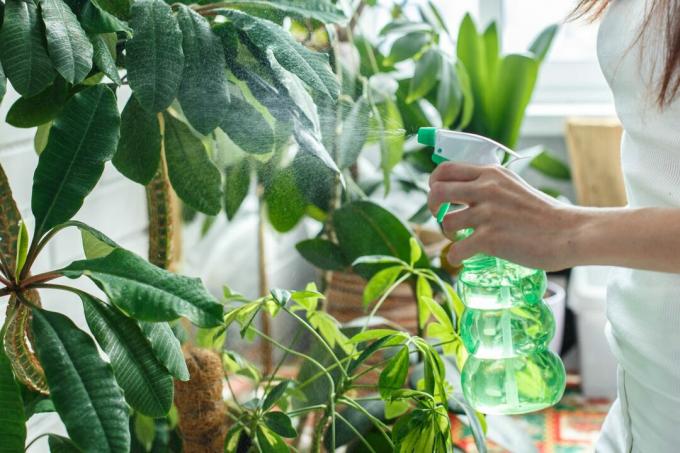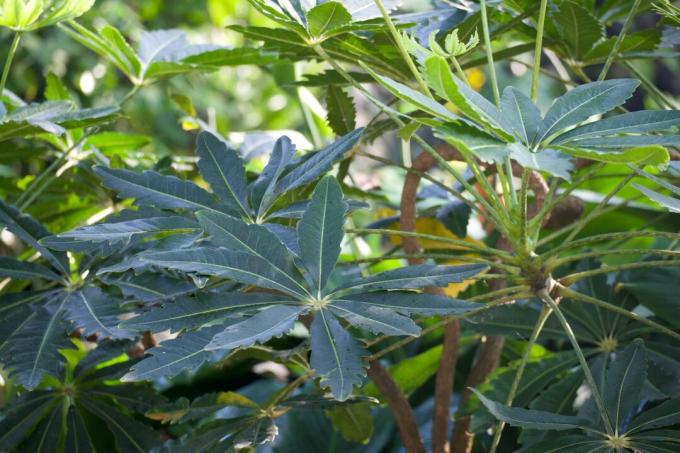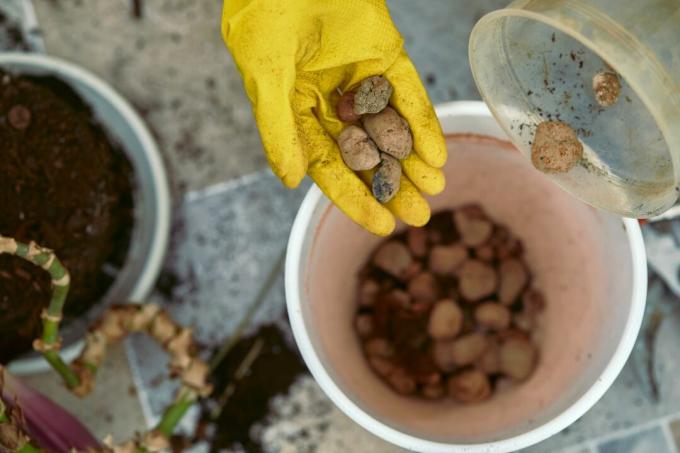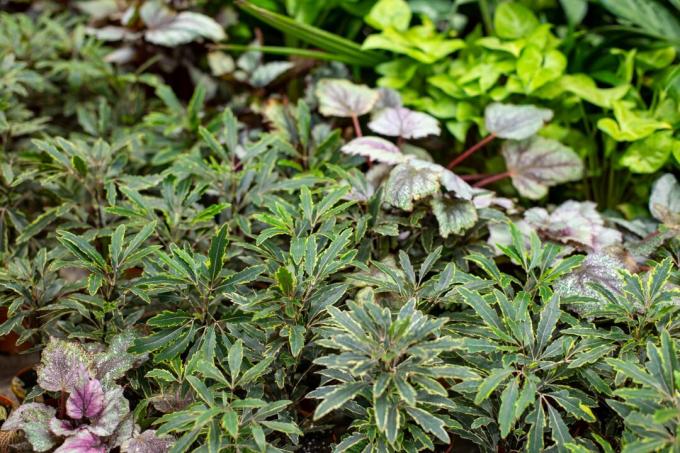Whether it looks particularly elegant or not – the finger aralie is definitely beautiful. Their interesting leaf decoration is a specialty in the kingdom of indoor plants.

Warmth and high humidity are the be-all and end-all if you hold your fingers for a long time (Schefflera elegantissima) would like to please. Here you can find out what else needs to be considered when caring for it and why the finger aralia sometimes sheds its leaves.
contents
- Finger Aralia: origin, flowering and properties
- Location, Earth and Co.
- Finger Aralia: The most important care measures
- increase finger aralia
- Is the finger aralia poisonous?
Finger Aralia: origin, flowering and properties
The finger aralia (Schefflera elegantissima) is native to New Caledonia and we like to keep it as a houseplant. The plant, up to 2 m tall, has a slender, upright habit and an overall elegant appearance. The finger aralia has leaves that sit on long stalks and are composed of several small leaflets. These are narrow with a serrated edge, palmately arranged and radiating out from the center. The leaves are leathery-rough and dark green in color. Due to their narrow shape and the hand-shaped arrangement, they are reminiscent of fingers, which gave the finger aralie its name. Some finger aralia varieties have a modified leaf color, such as the
Schefflera elegantissima 'Bianca' with a creamy white leaf margin. With optimal care, the finger aralia develops flowers, which are very inconspicuous.
Tip: When the leaves sprout, they are initially copper-red in color before later turning dark green.
Location, Earth and Co.
The finger aralia feels most comfortable in a location with morning or evening sun. That means it should be in a bright place, but not exposed to the blazing midday sun. In summer, the finger aralia prefers temperatures of 19 to 25 °C. In winter it should be kept cooler, with a minimum temperature of 15 °C. Around 18 °C is optimal, which is why the bedroom is suitable as a winter quarters, for example. A high level of humidity is also important for the finger aralie. A bowl filled with expanded clay and water can be used as a saucer for the plant.
To plant the finger aralia, you first prepare the pot. Since waterlogging is not tolerated, a drainage layer should be used for water drainage. Shards of pottery, pebbles or expanded clay in a thick layer on the bottom of the pot are ideal for this. This is followed by a layer of earth. For the finger aralia, for example, ours is suitable Plantura organic universal soil, because it can store water for a long time while maintaining its loose structure, so that the roots are well aerated. It is also peat-free and consists of natural ingredients. By mixing in 30% sand, the permeability of the substrate is increased and is thus optimally adjusted to the sensitive finger aralia. Now the aralia is used and potted with the soil mixture.

Finger Aralia: The most important care measures
Like all indoor plants, the finger aralia requires just the right amount of care. Especially when watering, it must not be too little and not too much.
Water whenever the soil has dried to the surface. This can easily be checked with a finger test. Lime-free water is best for houseplants. The water that is still in the coaster after 15 minutes must be poured off. This is how you avoid waterlogging. In winter, the finger aralia can be watered less, but should never be completely dry.

Regular spraying with stale tap water or rainwater keeps the finger aralia healthy because it likes high humidity.
Fertilize every two weeks from spring to fall. For foliage plants like the Schefflera elegantissima ours is suitable, for example Plantura organic indoor and green plant fertilizer. Our liquid fertilizer is mixed into the irrigation water so that the nutrients are quickly available for the plants. The special composition of the nutrients, especially the high potassium content, supports the growth of strong, healthy leaves and strong roots. In winter, the finger aralia does not need fertilization, but takes a break from growth.
You can cut back the finger aralia, because it will sprout again after the cut. Spring is the best time to cut back. A generous pruning is also worthwhile, especially in the case of bare specimens that have lost many leaves. In this case, shorten the shoots to 10 cm. Always use clean and sharp scissors to cut the finger aralia.
Finger aralia loses leaves: what to do?
Losing leaves is usually due to mistakes in care or an unsuitable location. The following causes come into question when the finger aralia loses leaves.

- Cold: The finger aralie wants to stay warm all year round. Temperatures below 15 °C are too cool even in winter and leaves can drop. In this case, the finger aralia should be placed in a warmer place.
- waterlogging: If the leaves turn yellow at first and later fall off, waterlogging can be the problem. Then it should be repotted quickly and watered less. A drainage layer in the pot is also useful.
- Dry air: Especially in winter, the air in the apartment is very dry. Be sure to mist the finger aralia regularly or place bowls of water on the heater in winter.

increase finger aralia
Unfortunately, it is not so easy to multiply the finger aralie itself. However, it is possible to cut cuttings or grow from seeds all year round. However, one cannot count on a certain success.
Greenhouse conditions are required for the cuttings propagation, because the cuttings rarely root in the apartment. The use of rooting powder is also recommended. Half-ripe shoots that are no longer green but have not yet become woody are used as cuttings. Then about 10 cm long pieces of shoots are cut off at an angle, the lower leaves are removed and the cuttings are placed in growing substrate. For example, our Plantura Organic Herb & Seed Soil are used, which is ideal for sowing and cutting propagation. The low nutrient content promotes root formation and the loose structure provides good support and sufficient ventilation for the young roots. Rooting usually succeeds in warm temperatures and high humidity.
Temperatures of at least 24 °C are also required for cultivation from seeds. Using a seed tray increases the chances of germination. In any case, fresh seed must be used.

Is the finger aralia poisonous?
Since the finger aralia is poisonous, care should be taken when handling the plant. As a precaution, gloves should be worn when cutting and repotting. Eating parts of the plant can cause gastrointestinal problems. If you have children or pets, you should reconsider purchasing this plant, because the finger aralia is just as poisonous to cats.
A somewhat more robust relative of the finger aralia is the Radiation Aralia (Schefflera arboricola). You can find out how to plant and care for them with us.
